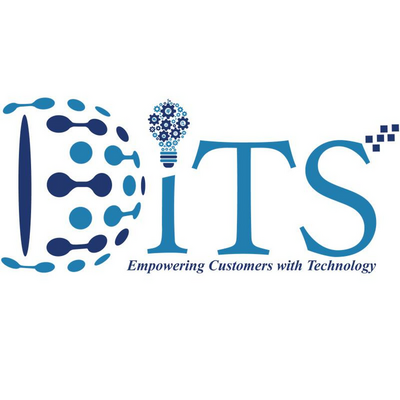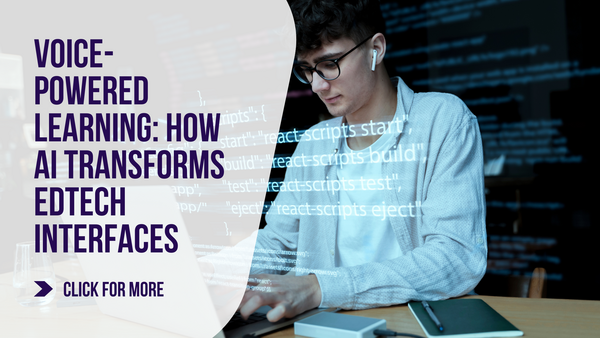Notifications
ALL BUSINESS
COMIDA
DIRECTORIES
ENTERTAINMENT
FINER THINGS
HEALTH
MARKETPLACE
MEMBER's ONLY
MONEY MATTER$
MOTIVATIONAL
NEWS & WEATHER
TECHNOLOGIA
TV NETWORKS
VIDEOS
VOTE USA 2026/2028
INVESTOR RELATIONS
COMING 2026 / 2027
ALL BUSINESS
COMIDA
DIRECTORIES
ENTERTAINMENT
FINER THINGS
HEALTH
MARKETPLACE
MEMBER's ONLY
MONEY MATTER$
MOTIVATIONAL
NEWS & WEATHER
TECHNOLOGIA
TV NETWORKS
VIDEOS
VOTE USA 2026/2028
INVESTOR RELATIONS
COMING 2026 / 2027
About Me
 Ditstek Innovations
Ditstek Innovations Ditstek Innovations is known for helping healthcare providers elevate care delivery through innovative and customizable platforms. They offer development for telehealth, remote diagnostics, healthcare CRMs, and EMR systems with a focus on efficiency and security. Their deep experience in custom healthcare software development ensures solutions are perfectly aligned with clinical processes and regulations. With flexible engagement models, Ditstek can scale with client needs and changing priorities. Their work is powered by collaboration, precision coding, and attention to detail. The team builds software that integrates smoothly into existing systems, reducing friction and enhancing usability.
Posted by - Ditstek Innovations -
on - Jun 4 -
Filed in - Technology -
223 Views - 0 Comments - 0 Likes - 0 Reviews

Imagine walking into a classroom where the student’s primary interaction isn’t tapping on a screen or typing on a keyboard, but simply speaking—and having their learning journey respond instantly, intelligently, and naturally. That classroom might not be far off from reality. Voice-powered learning, driven by advances in artificial intelligence, is quietly revolutionizing how education technology (EdTech) interfaces are designed and experienced worldwide.
This transformation is less about flashy tech and more about breaking barriers: making learning more accessible, intuitive, and personalized. It’s about enabling students to engage with educational content on their own terms—using the most human of tools: their voice.
So, what’s really happening behind the scenes? How is AI reshaping the EdTech landscape through voice? And why should anyone interested in mobile app development pay close attention? Let’s dive in.
Before we zoom into education, consider the broader context. Voice interfaces have shifted from novelty features to essential tools in our daily lives. Smartphones, smart speakers, cars, and even home appliances now listen and respond to voice commands.
This widespread adoption didn’t happen overnight. It took breakthroughs in natural language processing (NLP), machine learning, and speech recognition to evolve voice from clunky, error-prone gimmicks into reliable, almost conversational partners.
For EdTech, voice offers a natural next step: freeing users from screens and keyboards, lowering the entry barrier, and enabling learning in contexts where traditional inputs are impractical or impossible.
Learning is inherently a communicative process. Talking aloud can help memory, clarify thought, and encourage reflection. Voice interfaces tap directly into these cognitive processes, making learning more interactive and engaging.
Consider these real-world benefits:
Accessibility: Students with visual impairments, dyslexia, or motor difficulties gain immediate, equal access to learning resources through voice commands and auditory feedback.
Multitasking and Mobility: Voice allows learners to engage with material while on the move, whether commuting, exercising, or handling chores—turning dead time into productive study time.
Language Learning: Pronunciation, fluency, and conversational skills are best developed through speaking and listening. Voice-powered apps provide instant, nuanced feedback that text alone cannot.
Engagement: For younger learners especially, speaking to an app can feel more like a game or conversation than a lesson, increasing motivation and retention.
But voice learning isn’t just about convenience or accessibility. It’s a different way of interacting, requiring a thoughtful redesign of interfaces and educational strategies.
At the core of voice-powered EdTech apps lies sophisticated AI, which makes sense of what’s said—and what’s meant.
Here’s a peek behind the curtain:
Speech Recognition: Converts spoken words into text with increasing accuracy. Modern models are trained on diverse datasets to understand accents, dialects, and speech impediments.
Natural Language Understanding (NLU): Goes beyond transcription to interpret intent, context, and emotion. It distinguishes between “What’s photosynthesis?” and “Explain photosynthesis like I’m five.”
Dialogue Management: Keeps track of the conversation flow, manages turn-taking, and guides learners through complex topics with adaptive prompts.
Text-to-Speech (TTS): Provides natural, expressive voice responses, allowing apps to read explanations, offer encouragement, or ask questions in a lifelike manner.
Personalization Algorithms: Adjust responses and difficulty based on individual learner profiles, creating a dynamic and evolving learning experience.
The seamless integration of these components creates an interface that’s not only responsive but also empathetic—able to recognize when a student is confused, confident, or needs encouragement.
Voice isn’t just another input method—it fundamentally changes how apps are designed.
Unlike visual interfaces where users scan, click, and scroll, voice interactions rely on turn-based dialogue. This requires rethinking the structure of lessons and how content is presented.
Some key design principles include:
Conciseness and Clarity: Spoken content must be brief and clear to avoid overwhelming the learner’s short-term memory.
Context Awareness: Apps need to remember previous interactions and adjust responses accordingly, creating continuity.
Error Handling: Voice recognition isn’t flawless. Designing graceful ways to recover from misunderstandings is essential to prevent frustration.
Multimodal Support: Combining voice with visuals, touch, or text input offers flexibility and enriches learning, especially for complex topics.
Cultural Sensitivity: Voice interfaces must adapt to local languages, idioms, and learning styles for global relevance.
The result? Learning apps that feel more like tutors or companions rather than static tools.
Several pioneering EdTech platforms illustrate voice’s transformative potential.
Duolingo: Beyond typing and tapping, Duolingo’s voice exercises engage learners in speaking practice with instant AI feedback on pronunciation and fluency.
Google’s Read Along: Designed for early readers, this app listens to children read aloud, providing gentle corrections and encouragement, making reading practice interactive and supportive.
Microsoft’s Immersive Reader: Incorporates voice features that read text aloud and highlight words, aiding comprehension for struggling readers and language learners.
Third Space Learning: Combines live human tutoring with AI-driven voice tools to guide math learners, blending human empathy with AI scalability.
These examples underscore that voice AI is not a gimmick, but an integral, evolving part of the educational ecosystem.
Despite rapid progress, voice-powered EdTech isn’t a panacea.
Noise Sensitivity: Background noise and poor microphones can degrade recognition accuracy, especially in crowded or noisy environments.
Privacy Concerns: Always-on listening raises valid questions about data security and consent, requiring transparent policies and robust protections.
Complex Subject Matter: Some subjects demand detailed visuals or hands-on practice that voice alone cannot provide.
Language and Accent Gaps: While AI models improve, dialectal and linguistic diversity still pose challenges to universal usability.
Acknowledging these limits is crucial to developing responsible, effective solutions rather than overhyping technology.
Voice learning’s trajectory points to more immersive, context-aware, and personalized experiences.
Look for:
AI Tutors That Understand Emotion: Emerging affective computing could enable apps to detect frustration, boredom, or excitement and respond empathetically.
Seamless Multimodal Learning: Combining voice with AR/VR, gesture recognition, and biometric feedback to create truly immersive environments.
Collaborative Learning: Voice-enabled group interactions where learners engage in debates, peer tutoring, or group problem-solving guided by AI facilitators.
Integration with Smart Environments: Learning that adapts to physical settings—classrooms, homes, libraries—where voice assistants coordinate content delivery.
More Inclusive Design: AI models that respect linguistic diversity, dialects, and cultural nuances, making voice learning truly global.
The goal is to remove friction, deepen engagement, and personalize learning paths at scale.
If you’re developing mobile apps in EdTech, ignoring voice AI is not an option. Voice is no longer just an add-on feature; it’s becoming a fundamental part of how users expect to interact.
Incorporating voice transforms your app from a passive content repository into an active learning companion. It expands your potential user base, especially among those with accessibility needs or language barriers. It also aligns your product with emerging trends that educators and learners are already embracing.
The technical demands are real, but so are the rewards. Developing voice-powered EdTech apps requires investment in AI expertise, UX redesign, and rigorous testing—but the payoff is a future-proof, differentiated product that resonates deeply with users.
For mobile app developers stepping into voice-powered learning, here are some practical takeaways:
Start with clear educational goals, not technology for technology’s sake.
Invest in quality AI models tailored for education and the languages you support.
Prioritize privacy and data security from day one.
Design for multimodal interaction—voice plus visuals and touch—rather than voice-only.
Collaborate closely with educators and learners during development and testing.
Plan for ongoing updates to refine voice accuracy and adapt to evolving educational standards.
Think globally but localize thoroughly.
Voice-powered learning is quietly reshaping EdTech interfaces by making education more natural, accessible, and personalized. AI’s role isn’t just to translate speech into commands but to create meaningful, context-aware dialogues that support and engage learners in ways traditional interfaces can’t.
For businesses and developers aiming to innovate in mobile education apps, embracing voice AI is no longer optional—it’s essential. The potential to break down barriers and redefine how students interact with knowledge is immense.
If you’re looking to build the next generation of learning experiences, tapping into this voice revolution could be your game-changer. In markets with vibrant tech ecosystems, including areas focused on app development Atlanta, the future is ripe for bold, thoughtful innovation that puts voice at the center of learning.
The conversation has begun. Are you ready to listen?
